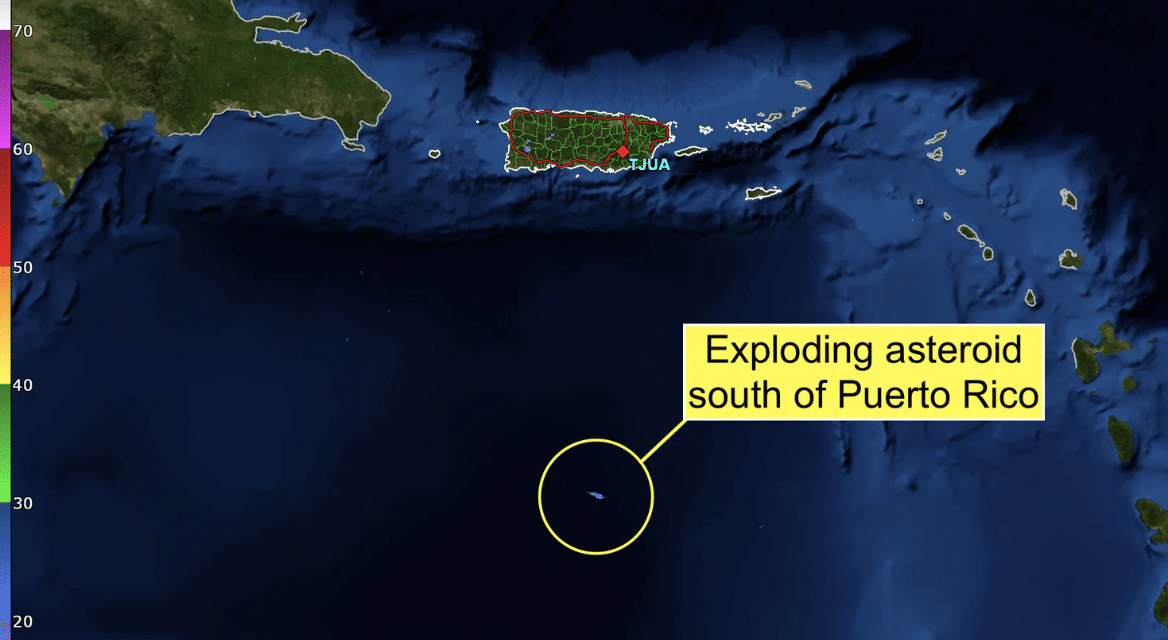(WP) – The GOES-16 weather satellite is designed to detect flashes of lightning. On Saturday, it saw an asteroid. At 4:25 p.m. Saturday, meteorologists noticed an unusually bright flash signature over Caribbean waters 170 miles south of Puerto Rico. Its light was visible in an area as large as Rhode Island — far too big to be a lightning strike. Plus there were no clouds in the area. It had to be something else. The answer turned out to be something out of this world.
A spattering of debris showed up on the radar of the National Weather Service’s office in San Juan, Puerto Rico. That’s a telltale sign of a meteor or asteroid impact. Just how large was it? About 13 to 16 feet (4 or 5 meters) in diameter or the size of car. As the asteroid entered the atmosphere, SpaceWeather.com reports that the Comprehensive Nuclear Test Ban Treaty Organization’s infrasound station in Bermuda detected “airwaves” associated with the blast. Its recording station is located more than 1,000 miles away from where the asteroid hit, and yet the station “heard” it. READ MORE

















